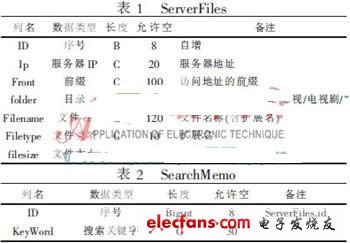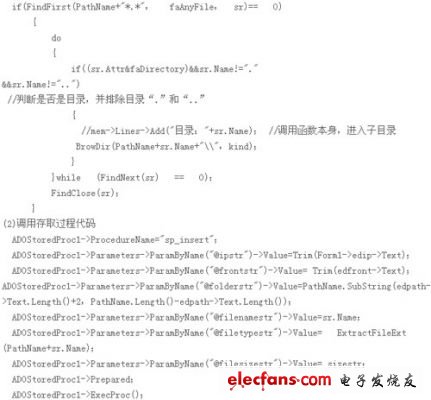Search engine is currently the most commonly used way for people to find network resources. According to the design principle of search engine, this system adopts multi-agent method to realize the unified integration of different resources of the school intranet through the setting of index module parameters and establish the search of school intranet resources. engine. The search engine provides a new way for the school intranet to share resources, improve the utilization rate of school resources, and reduce the pressure on the intranet bandwidth.
With the rapid development of the campus network of colleges and universities, the network is advancing at a high speed as an information dissemination platform. Various information, software, and multimedia resources in the school campus network are becoming more and more abundant and showing explosive growth. Taking our school as an example, the current software resource capacity is 300G, music resource capacity is 4T, movie resource capacity is 9T, and learning resource capacity is nearly 1T. These information resources help people better complete their work and study, enrich their spare time, and provide More fast and convenient download method. However, this is because digital resources are distributed in different servers and storage. How to use these massive intranet resources more effectively becomes a question for information managers. People search for information on the Internet will use the search engine to search for the required information, through the fuzzy matching mechanism of the search engine, you can easily find the information you want. For the information management personnel of the school information center, if a search engine mechanism can be introduced in the school intranet to solve this problem, it can enable the teachers and students to use this information quickly and conveniently and reduce repeated downloads from the external network and reduce the school interior. The pressure of the network outlet bandwidth and the problem of fully improving the utilization rate of the internal resources of the campus network.
1 Demand analysis
The search engine principle usually refers to a full-text search engine that collects tens to tens of billions of web pages on the Internet and indexes each word (that is, keyword) in the web page to build an index database. When a user searches for a keyword, all web pages that contain the keyword in the page content will be searched out as search results. After sorting through complex algorithms, these results will be ranked in order according to the relevance of the search keywords.
The main goal of this system is to follow the principle of search engine to achieve a comprehensive search of the school's intranet information resources. These resources may be of different types, may exist in different servers, and the types of the servers are not the same, such as FTP servers, HTTP servers, and so on. For these different environmental requirements, the system is required to complete the following requirements:
(1) Index establishment should meet different server types, such as http, ftp, etc.
(2) The type of file should be distinguished when the index is established.
(3) Delete the index of this machine regularly (manually), and re-establish the file index of the specified directory.
(4) The search can support fuzzy queries.
(5) Provide user search and download functions, record keyword frequency and file access times.
For the above requirements, this system adopts multi-agent mode, install index establishment mode (agent) for different servers, and then realize the index establishment of resources in different servers through the configuration of parameters.
2 System analysis
2.1 System structure
The structure of this search engine is shown in Figure 1. The design and development of the software are mainly two parts: (1) the establishment of an index. Mainly responsible for the establishment of data in the background, using client and server structure (C / S structure); (2) Web query. Mainly responsible for providing users with friendly interface query service, using browser and server structure (B / S structure). Through the development of an index establishment program, search the file storage server (FTP, HTTP, etc.), analyze the file name, size, category, location, etc. and merge these file information with the server IP, access prefix, etc. to create a corresponding index to add to Database server.

2.2 Database design
In order to facilitate the processing of file information in the database, the database has designed two basic data tables, one stores the index building module, and puts the file index into Table 1; the other table mainly stores the relevant information searched by the user, as shown in Table 2 . If the search data is very large, the basic data table should be divided according to different rules, and multiple sub-tables (which can be classified according to server type, file type, or network to which the server belongs) are established to achieve efficient search of resources.

2.3 System design
The parameters on the interface of the index building module (agent) mainly include the server IP address, server prefix, select the search path, and set the timing time. Server-related files are stored on a massive scale. In order to improve the efficiency of index creation, the system uses background storage processes to implement operations on the database.
The index building module is the core of the entire system. Through the recursive algorithm, the information of all files (or files of the specified type) in the specified folder in the server is sequentially extracted, and the physical address of the file is converted into a logical address and a corresponding relationship is formed. The preset rules are put into the database correspondence table to realize the establishment of the file index in the file server. The searched user program adopts the B / S structure, and the user searches the keywords through the browser to query the resource. The searched keywords adopt fuzzy matching among the classified folders and file names, and the search results are displayed with information such as category, file name, file type, and file size.
2.4 Main core code
(1) Search file code

Intranet resource search engine plays a very important role in the integration of internal resources similar to the campus network. Its importance is reflected in the ability to provide various resources of the campus network to users in a unified search engine, which is convenient for users to find and use. , Greatly improving the utilization of these resources. The intranet search engine introduced in this article has produced obvious results in our school. With the deepening of promotion, more and more teachers and students are using it to find the resources they need, which greatly improves work efficiency and Alleviated the pressure on the campus network egress bandwidth.
Portable Power Station,110V Portable Power Station,220V Portable Energy Storage,Power Banks & Power Station
GuangZhou HanFong New Energy Technology Co. , Ltd. , https://www.zjgzinverter.com